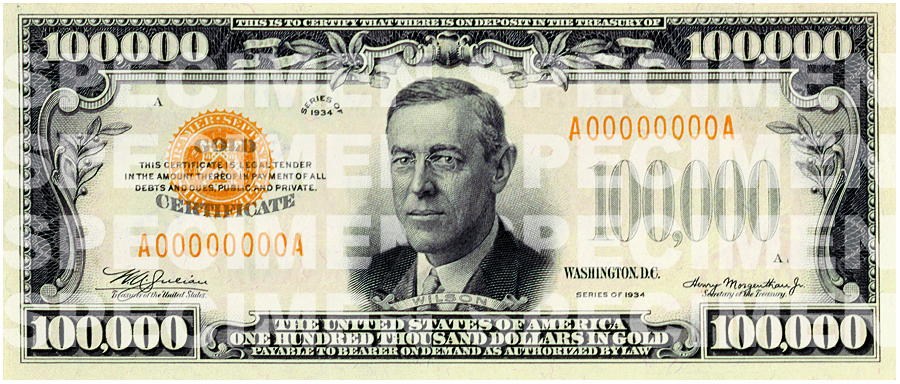
United States currency denominations above $100 are not available from the Department of the Treasury, the Federal Reserve System, or the Bureau of Engraving and Printing. On July 14, 1969, the Department of the Treasury and the Federal Reserve System announced that currency notes in denominations of $500, $1,000, $5,000, and $10,000 would be discontinued immediately due to lack of use. Although they were issued until 1969, they were last printed in 1945.
Specific examples of these higher denominations include the $500 Note (Blue Seal), $500 Note (Green Seal), $1000 Note (Blue Seal), $1000 Note (Green Seal), $5000 Note (Blue Seal), $10,000 Note (Blue Seal), $10,000 Note (Green Seal), and the $100,000 Gold Certificate.
These notes are legal tender and may be found in circulation today; however, most notes still in circulation are probably in the hands of private numismatic dealers and collectors. If you are interested in purchasing or learning more about these larger denominations, more resources may be available online or at your local library.
The largest note ever printed by the Bureau of Engraving and Printing was the $100,000 Gold Certificate, Series 1934. These notes were printed from December 18, 1934 through January 9, 1935 and were issued by the Treasurer of the United States to Federal Reserve Banks (FRB) only against an equal amount of gold bullion held by the Treasury. These notes were used for transactions between FRBs and were not circulated among the general public.

